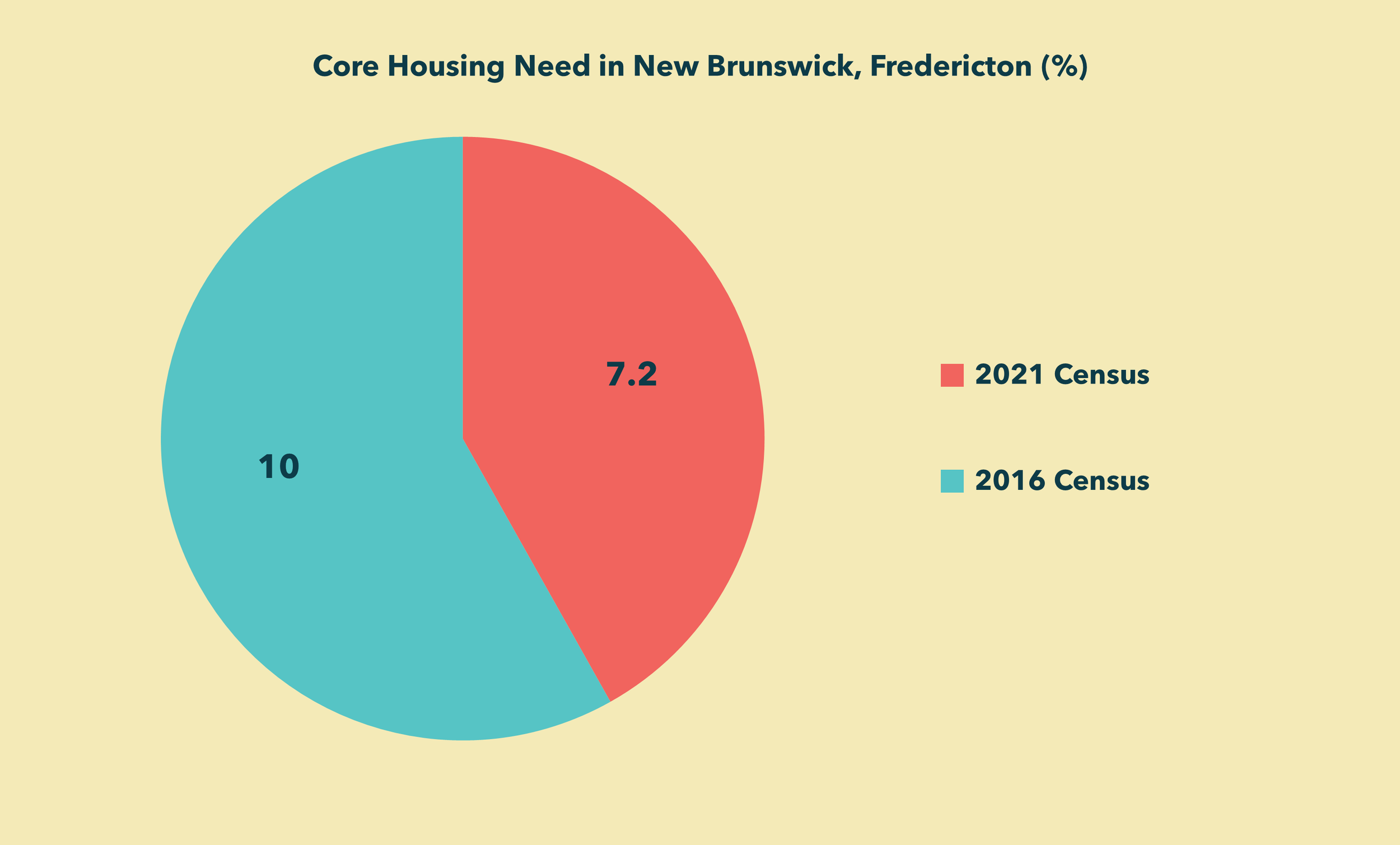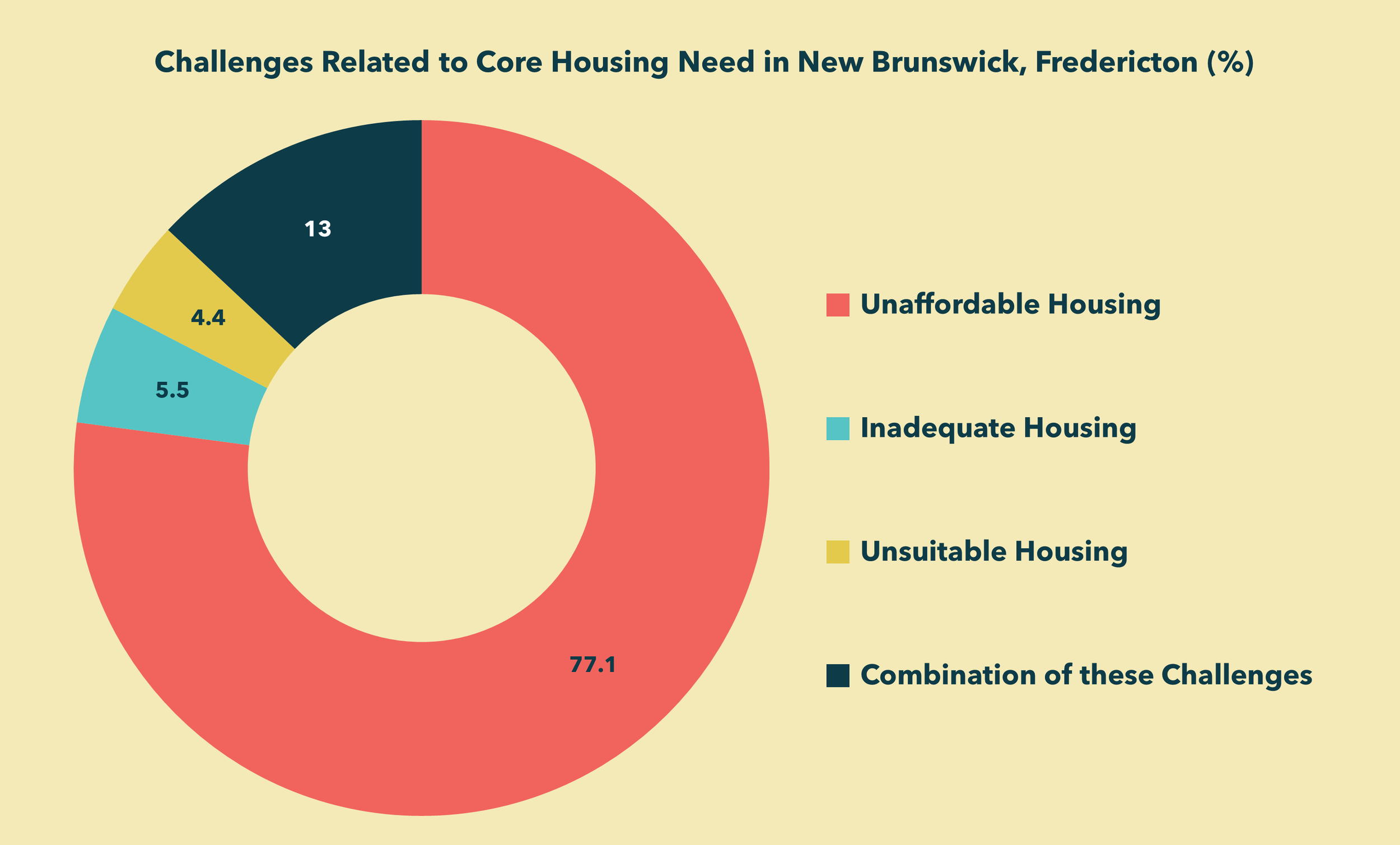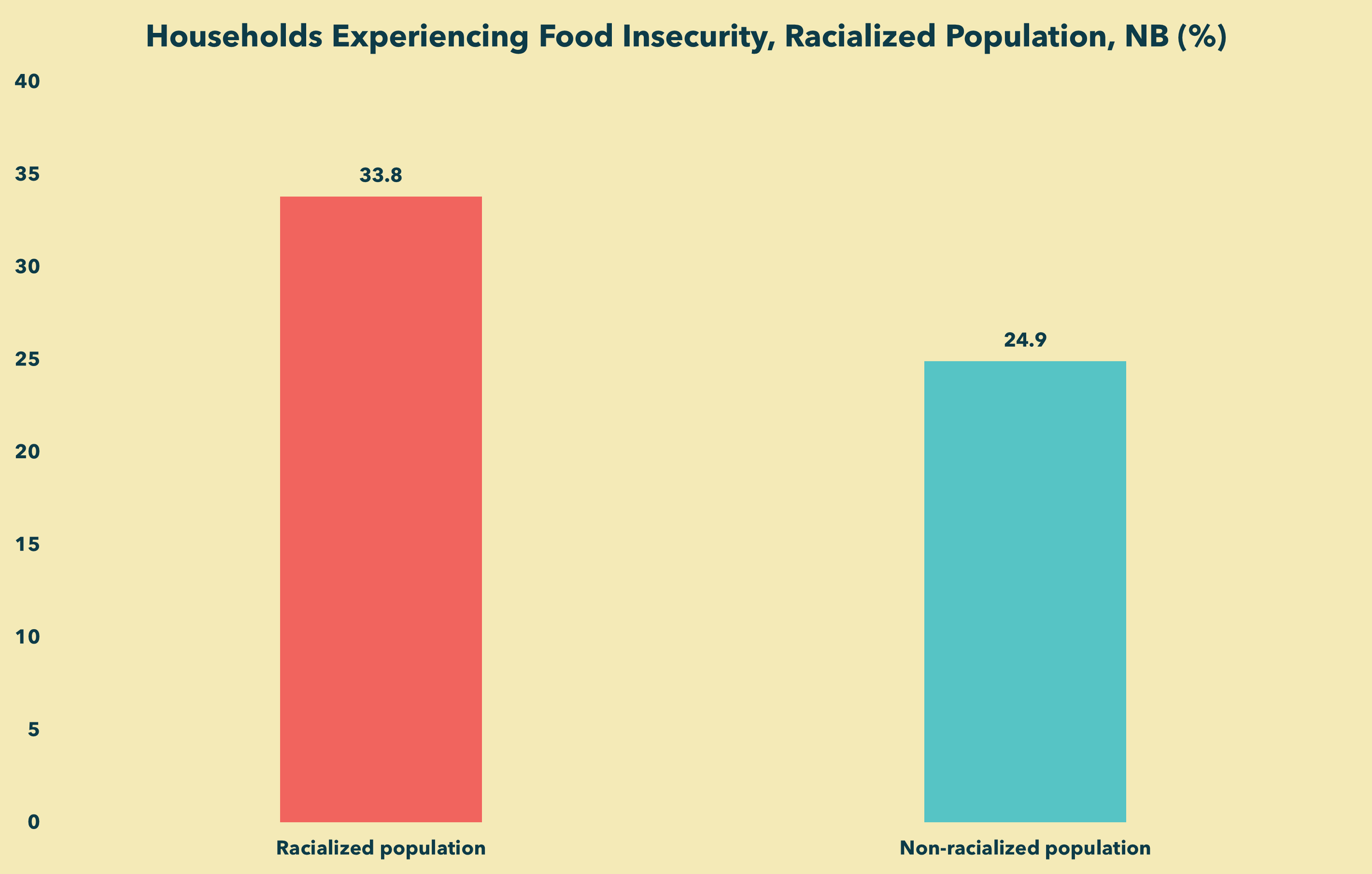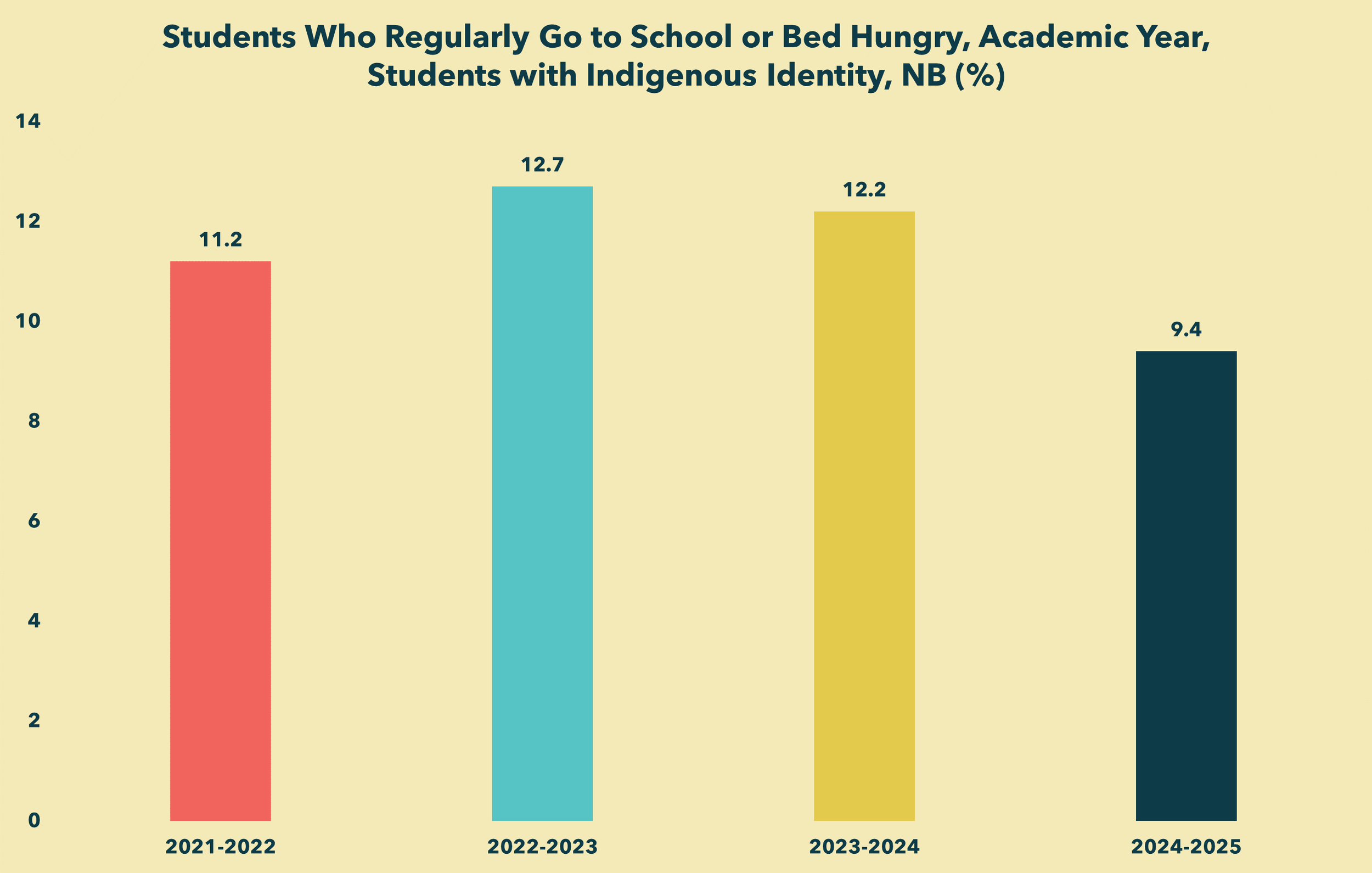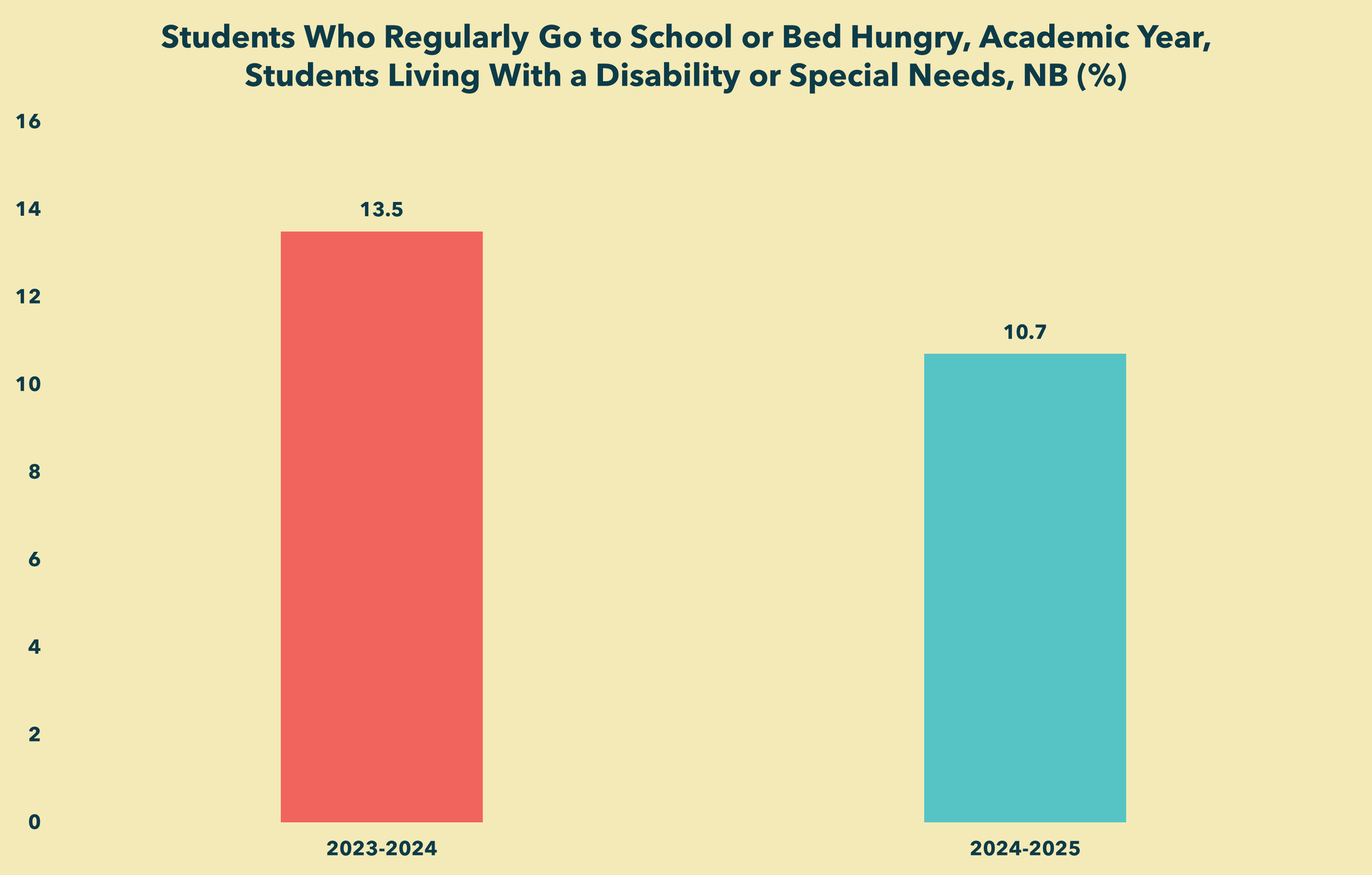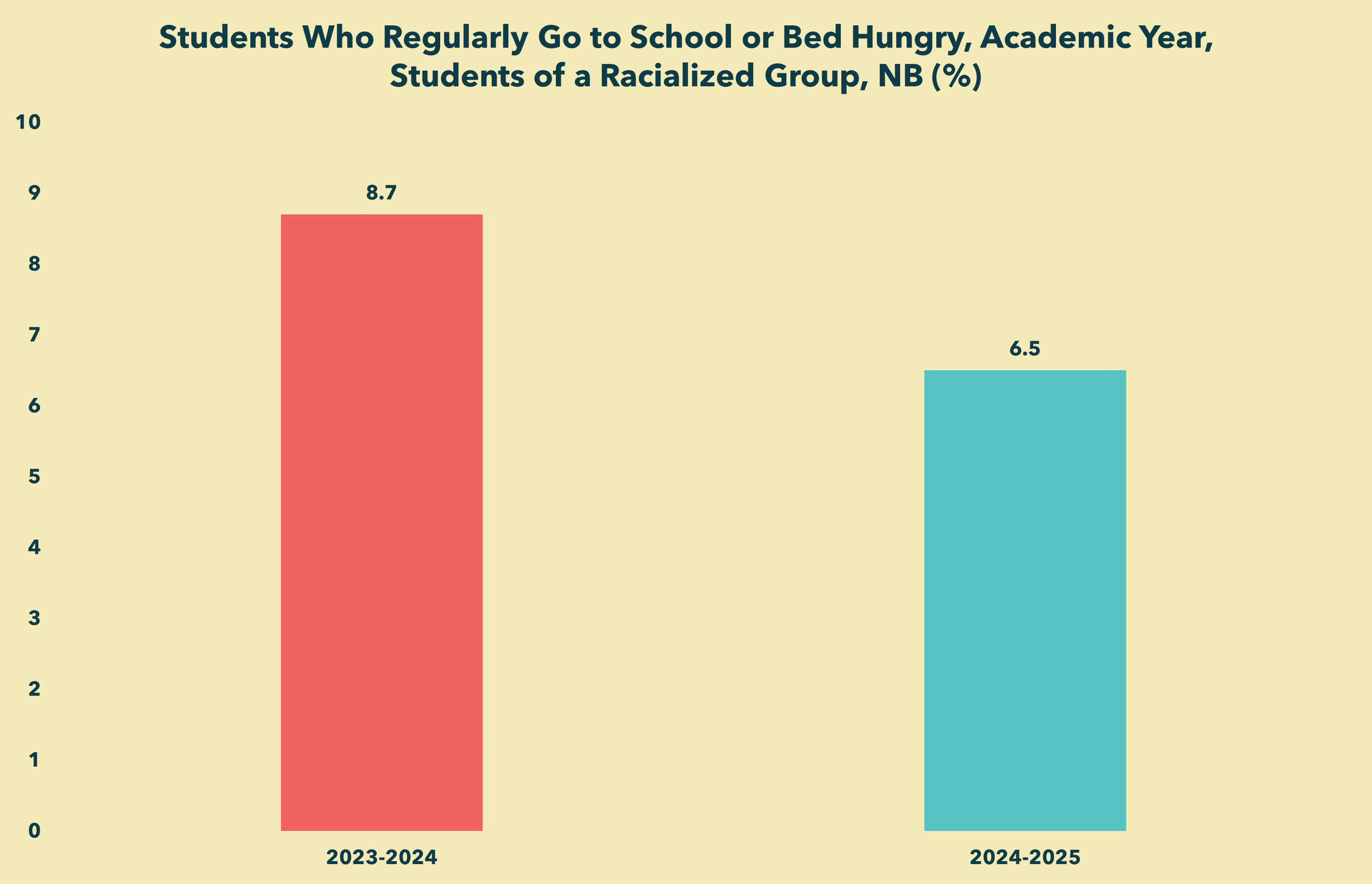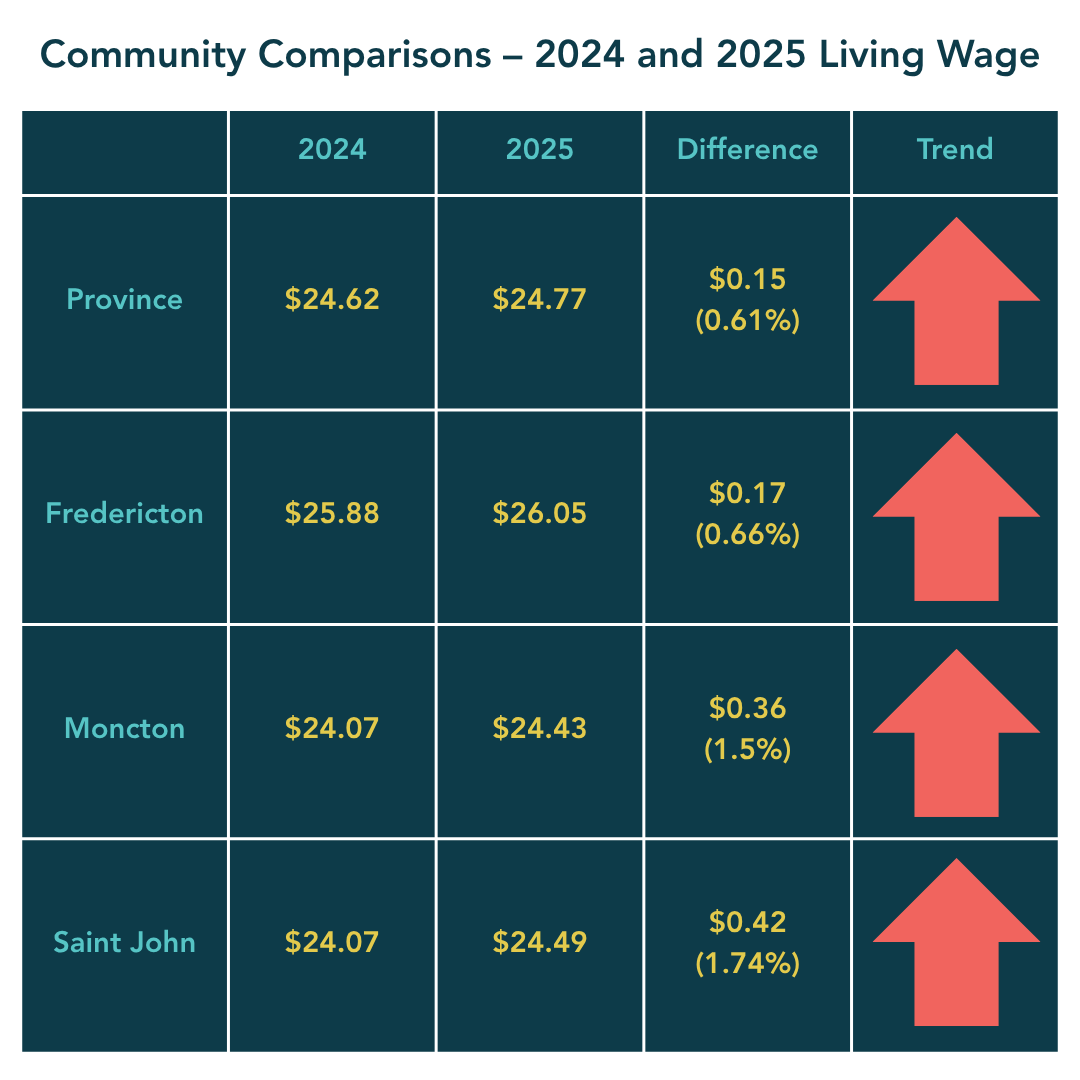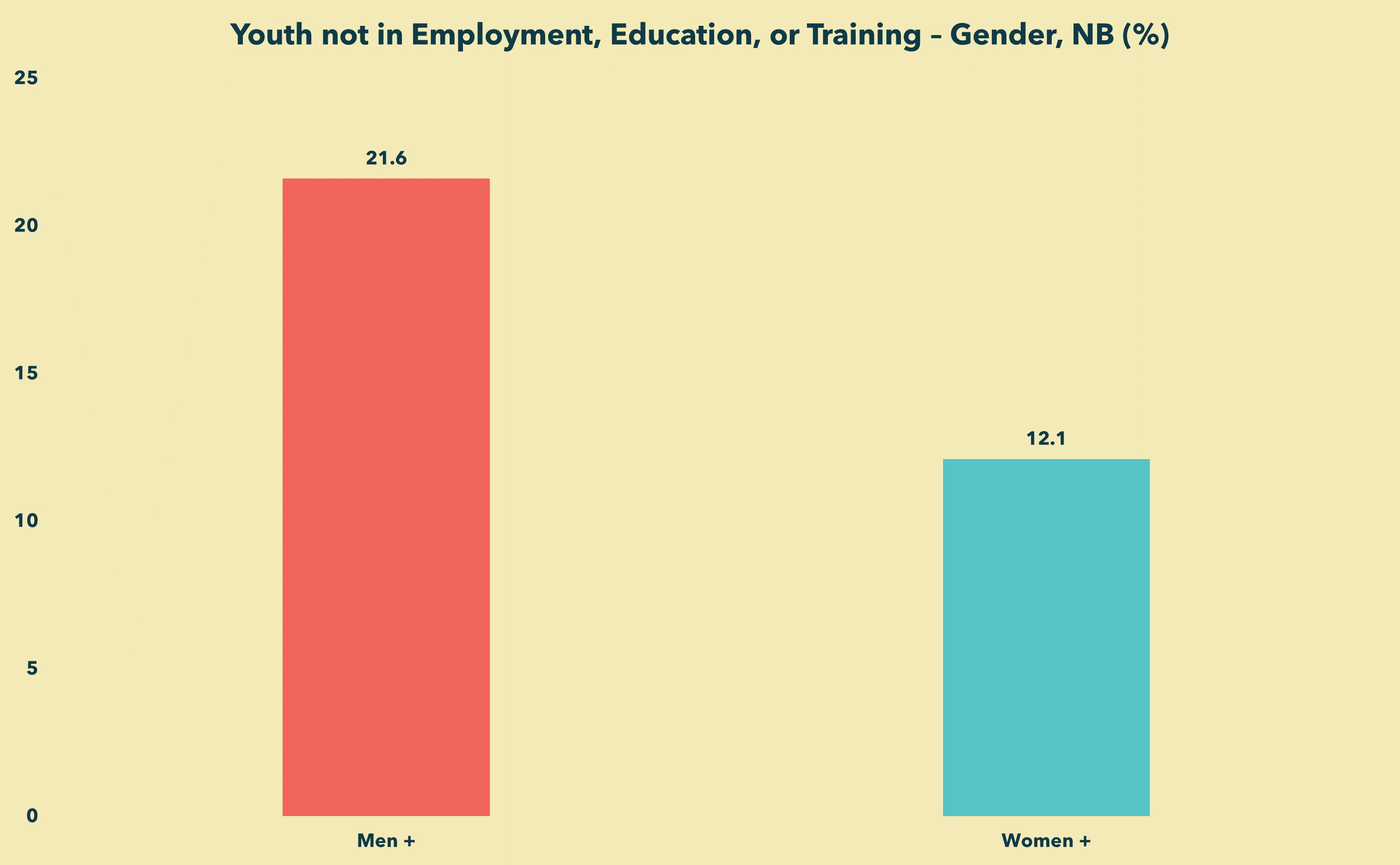Pillar I: Basic Needs and Wellbeing
Dashboard
Core Housing Need
In 2023, the hourly wage needed to afford rent in New Brunswick was calculated at $17.96 for a 1-bedroom apartment and $22.50 for a 2-bedroom apartment. This takes into account working 40 hours a week, for 52 weeks a year, without spending more than 30% of income on housing, and without "sacrificing" other basic needs.
By 2023, minimum-wage workers had to work 48.7 hours per week to afford a 1-bedroom apartment and 61 hours per week for a 2-bedroom apartment.
The 2018 MBM reference family is 2 adults and 2 children. Showcasing the 3-bedroom housing needs and costs is crucial, as it is an acceptable size for housing such a family.
Food Security
Food insecurity, as defined by the PROOF research project at the University of Toronto, refers to a “compromise in quality and/or quantity of food due to a lack of money for food”.
Children have the highest rate of food insecurity among all age groups in Canada – 24.3% in 2022, which translates to almost 1.8 million children. This is an increase from 1.4 million children in 2021, co-occurring with the rise in child poverty.
Nearly 9 million people (23%) are living in food-insecure households in Canada.
Provincial Funding for School Food Programs
Provincial funding for school food programs started in 2021, with an annual investment of $2 million since 2023 alongside $11 million in new funding from the federal government.
Food Banks
As of March 2025, NB food banks saw 32,343 visits, including 10,791 made by families with children. This marks a 0.5% increase year-over-year – among the lowest rates nationally.
In 2024, 39% of food bank users relied on social assistance.
17% of food bank users reported employment as their main source of income.
The proportion of users with job income has increased by 3.5% year over year.
In Canada, nearly 1 in 5 food bank clients were employed in 2025, compared to 1 in 10 in 2019.
This is the highest proportion of employed food bank clients ever recorded across Canada.
12.2% of food bank clients nationally receive provincial disability support.
40% of food bank clients in Canada are receiving social assistance or disability-related supports.
Across Canada, single-person households remain the most common household type accessing food banks.
The number of two-parent families with children accessing food banks continues to grow (by 4% nationally)
Child Care
29% of children in New Brunswick live in child care deserts, meaning that there are more than three children (who are not yet in kindergarten) for every licensed full-time space.
Transportation
Coming soon
Living Wage
New Brunswick has the third lowest minimum wage in Canada, at $15.65
A living wage, however, is not the same as a minimum wage. It also is not a guaranteed annual income. It is defined as the hourly wage a worker needs to earn to cover their basic expenses and participate in their community.
In New Brunswick, the gap between the minimum wage and the living wage is $9.12.
The living wage in New Brunswick is calculated by the Human Development Council. You can access their 2025 report here.
We measure the proportion of youth who are not in employment, education, or training (NEET) because youth who are not engaged in one of these areas may be experiencing difficulties transitioning from school to the labour market, thus increasing their risk of low income and social exclusion. The indicator has been used in Canada since 2009 but has been used by the Organisation for Economic Cooperation and Development (OECD) since the late 1990s.
Youth not in Employment, Education, or Training (NEET)
The NEET rate for young men in their 20s with a bachelor’s degree over this period was driven by their exit from the labour force. Among young women, increased unemployment was offset by increased school attendance.
Highly-educated immigrants have been disproportionately affected by rising NEET rates, regardless of their immigration period to Canada or where they received their education.
Life Satisfaction
Coming soon
Definitions
Food Insecurity
Refers to people who live in households that experience marginal, moderate, or severe food insecurity.
Economic Family
Means a group of two (2) or more people who live in the same house and are related by birth, marriage, living together as a couple, adoption, or foster care.
Racialized Person/Family
This term comes from “visible minority”. A visible minority means someone who is clearly part of a racial group that is not white, according to the Employment Equity Act. The Act says visible minorities are people who are not Indigenous and who are either not white or not of European background.
Senior Family
Refers to a family where the highest-income earner is 65 years or older.
Non-Senior Family
Refers to a family where the highest-income earner is younger than 65 years.
Housing Insecurity
Housing is a human need that provides shelter, a place to share with others, as well as an important determinant of health. People who experience housing insecurity are lacking proper shelter.
Core Housing Need
Households in core housing need live in an unsuitable, inadequate, or unaffordable dwelling and cannot afford alternative housing in their community.
NEET
The number of people who are not attending high school, college, CEGEP, university, or equivalent and are not employed, as a percentage of the population aged 15 to 29 years.
Living Wage
The hourly wage a worker needs to earn to cover their basic expenses and participate in their community.


